#Reynier Leyva Novo
Explore tagged Tumblr posts
Photo

Reynier Leyva Novo | Sicardi Ayers Bacino | The Guardian
14 notes
·
View notes
Text
Esa farsa electoral (VIII)
No votes el veintisiete de noviembre. Es muy sencillo. No valides al caudillo, el mequetrefe, el zoquete, el que organiza un banquete cuando en #Cuba no hay comida, el que da la bienvenida a #Putin y su terror, el del cuerpo represor contra la patria y la vida.
No votes el veintisiete de noviembre. Es muy sencillo. No valides al caudillo, el mequetrefe, el zoquete, el que organiza un banquete cuando en Cuba no hay comida, el que da la bienvenida a Putin y su terror, el del cuerpo represor contra la patria y la vida. ***Nota bene: Desde el 30 de noviembre de 2020, he publicado a diario en Belascoaín y Neptuno. Te invito a leer la décima de este díahace…

View On WordPress
0 notes
Note
top 5 museums!
man geese giving me a hard one right off the bat. erm, i'm gonna treat the branches of the smithsonian like separate museums, because otherwise this list would be... very short.
1. National Museum of Natural History: i'm an americanist by training and don't get me wrong, i love my subject. but one of the things i love most about this museum is that i know so little about the stuff it houses. there's an alternate reality out there somewhere where i'm actually studying marine biology and working with jellyfish and learning about coelacanths, but it's not this one. i've also just spent a lot of time in this museum. i'm emotionally connected to it. i have to go visit the giant squid, and the coelacanth, and robert kennicott's skeleton. they're friends, and i love them, they've gotta be at the top of the list. (not to mention the creepy bird hall, which haunts my nightmares)
2. National Museum of American History: this was in a bit of a fight with the Hirshhorn for second place, and only won out because working there and getting to be in the space before people showed up, and for the ACCelerate Festival are two of my absolute most favorite memories. uh, what else can be said about this museum. sitting in the star spangled banner hall can make you feel very small, regardless of your (hopefully complicated) feelings about united states history. the statues in america on the move stare into your soul and look like ghosts and i am SURE they move when no one else is in the building, night at the museum style. they have muppets (what's not to love), and the ruby slippers, and an entire house! and as i've said before, i'm a united states historian by training, so i've got immense fondness for the place.
3. the Hirshhorn Museum of Modern Art: my beloved brutalist donut. my terrible horrible tiny escalatored, round menace. this museum is terrible, and wonderful, and i love it dearly. it's dizzying and confusing if you've never been (there is exhibit space in the basement, don't be fooled) and i've seen many, many things that have stuck with me in its galleries. a few favorites include pat steir's color wheel (2018-2019), ed atkins' safe conduct (2016), arthur jafa's love is the message the message is death (2016), reynier leyva novo's the weight of history, five nights (2014), janine antoni's lick and lather (1993) and literally so many more i couldn't name but could shriek excitedly about at you if i saw them again. it has instilled within me a love of modern art that i've known existed since i was very young (see next entry) but wouldn't have developed the same way without access to the hirhshhorn
4. The East Wing of the National Gallery of Art: the modern wing, the contemporary wing my beloved. where i first saw lavender mist by jackson pollock at a very bitty age and panicked everyone in the vicinity by running towards it. where the calders are kept. that gorgeous i m pei building full of light and glass and wonderful art and noise and the public! i am making myself beyond emotional just thinking about how long it has been since i've been in one of these spaces.
5. The Whaling Museum on Nantucket, MA: this is a bit of a cop out answer. i spent a summer working in the historic properties owned by the historical association, and i loved it, and i loved the museum. it's big open hall with a whale skeleton, it's rooftop deck perfect for eating lunch and looking out across the water, it's location partially inside an old candle factory with the actual press they used to harvest whale oil. it's a gorgeous space. that said, it's not necessarily a special museum by industry standards. it's a small local place (somewhere that happens to be very wealthy) and it shows. i'm fond of it for the time i spent there, but it probably wouldn't take much to knock it off this list.
it might surprise you there aren't bigger museums on this list. that's at least in part because i don't have a ton of experience with other museums (at least not as a visitor) that feels ridiculous to admit, as someone in the industry, but the pandemic (and the fact that my extended family in places where there are other museums, er, don't really like museums) have limited my experiences. im beyond lucky to be where i've been, and to be so involved in these places. this could easily be a list of my top 4 favorite jobs (+ plus the national gallery). idk.
send me an ask with "top five" anything, and i'll write you a very rambly answer!
6 notes
·
View notes
Photo

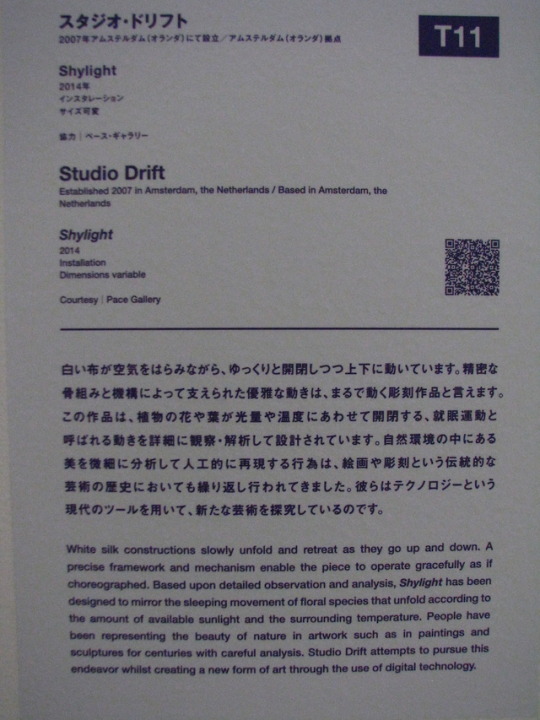
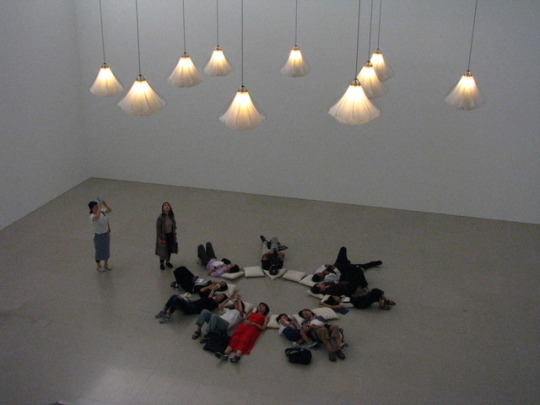





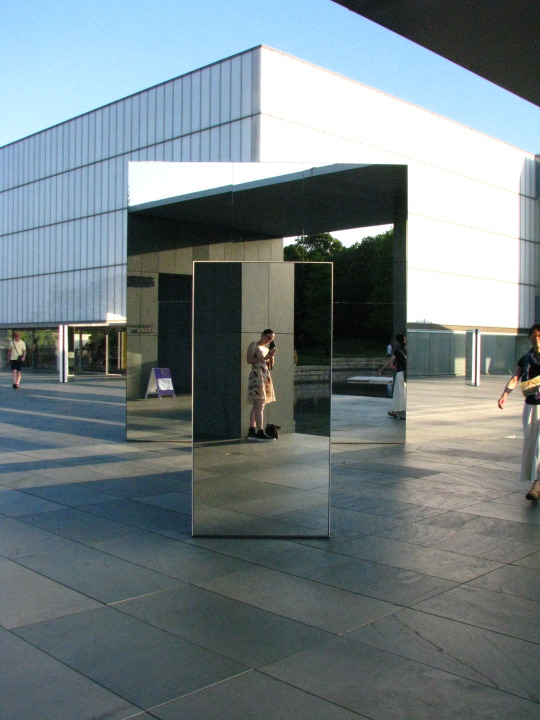

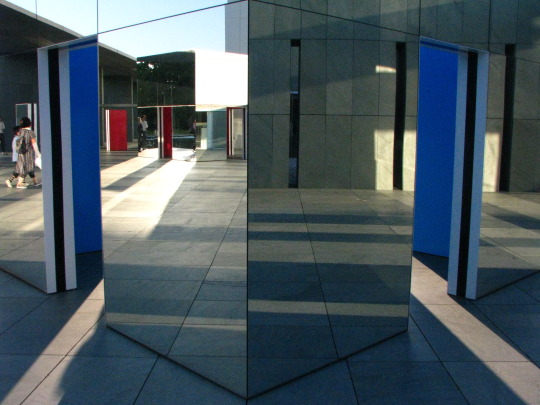

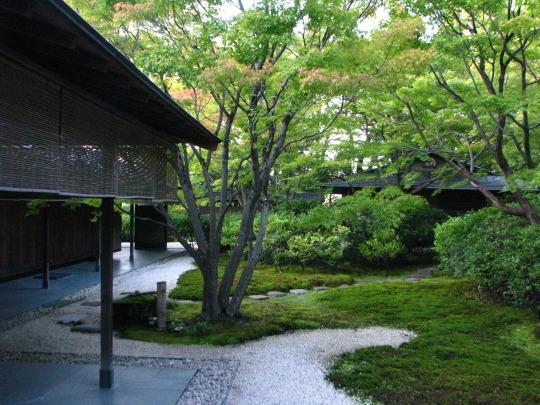
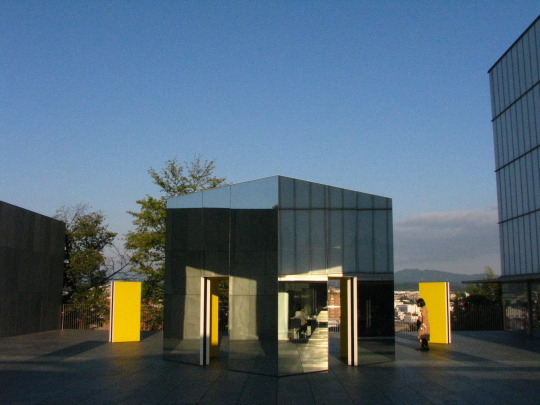

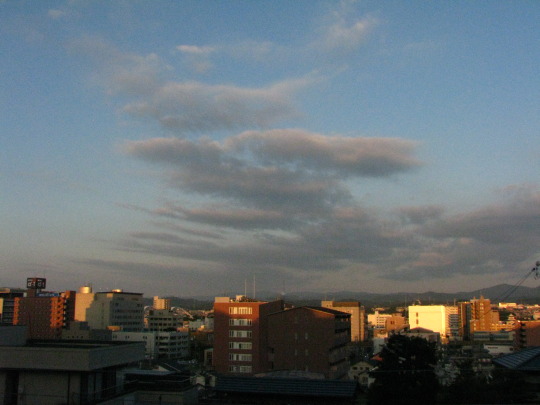
Toyota Municipal Museum of Art
I went to the Toyota Municipal Museum of Art in Toyota, Japan to see the “Gustav Klimt Vienna-Japan 1900″ and the Aichi Triennale (international, multi-venue art fair) exhibition (I posted about the Triennale previously if you’re interested).
The Toyota Municipal Museum of Art is one of the most beautiful and interesting art museums I’ve seen. It was designed by renowned museum designer Taniguchi Yoshio. Additionally, the grounds were designed by landscape artist Peter Walker. It’s on a huge property and is bordered by a traditional Japanese teahouse and garden (see above photos) as well as a castle ruin. A whole day can be spent not only looking at the exhibits but enjoying the architecture, grounds, and surrounding properties.
In case you were wondering, Toyota is in fact home to Toyota car company and 80% of the town works at Toyota :-)
The Aichi Triennale’s exhibits were outstanding. Every single exhibit had an important theme or social comment. The photos above show just a couple. The floral designs by Studio Drift touched on the theme of digital technology in art (do we react the same way to it?), and the work about the Okinawa protests draws attention to a very big issue here: 75% of the U.S. bases in Japan are in Okinawa, even though it is the smallest part of the country. There have been many instances of crime, often violent, as well as accidents (often caused by negligence), not to mention environmental degradation due to the construction/relocation of bases. Specifically, destroying the natural habitat of sea animals including the dugong, or manatee, by filling in the port areas where these animals live has been a particular point of contention.
There were a couple other works that I didn’t take photos of, but I wanted to mention: Taryn Simon’s photos were mind-blowing. I can’t believe some of these photos/videos were allowed to be taken. For instance, she had photos of everything confiscated by the U.S. border patrol in a 24 hour period at one airport; another video showed a test bombing by the US military; another showed glowing blue circles which are actually barrels of radioactive material at a restricted site. Thought-provoking, to say the least.
Another notable series of works were by Reynier Leyva Novo, who took photos of re-created floral tabletop arrangements. What makes this interesting is that these arrangements were at the signing tables of famous trade/political deals. Just the floral arrangements, with a description of the deal beside it. The deals described were often contentious or unethical, and a lot of them were very high-profile. We are talking major deals between countries that were often very shady. It was so interesting to not only read about these deals, but the presentation... just featuring the flowers, looking so inconspicuous in themselves.
Just google Taryn Simon and Trynier Leyva Novo to see examples of their work. In particular, I think these two artists are among the best of the Triennale.
#aichi#aichi prefecture#toyota#toyotacity#toyota city#toyotamunicipalmuseumofart#aichitriennale#artexhibit#artexhibition#visualart#politicalart#architecture#japanesearchitecture#japanese architecture#teahouse#japaneseteahouse#artmuseum#artgallery#internationalart#okinawa#manatee#mirrors#mirrorshine#japaneseculture#modernjapan
21 notes
·
View notes
Photo

0 notes
Photo

(via Dialogues in Cuban Art | Reynier Leyva Novo)
Reynier Leyva Novo
1 note
·
View note
Photo

Still time to visit EL CIRCUITO DEL ARTE CUBANO (Cuban Art Circuit) at EL APARTAMENTO, a group show featuring works by 13 artists: Raúl Cordero, Arlés del Río, Tomás Esson, Leandro Feal, Diana Fonseca, René Francisco, Flavio Garcialandía, Orestes Hernández, Yornel Martínez, Reynier Leyva Novo, Levi Orta, Eduardo Ponjuán, Ezequiel Suárez. CIRCUITO is presented within the context of the XIII HAVANA BIENNIAL.
Follow us on Instagram: http://bit.ly/habanaarte
#havana#habana#habanaarte#cubanart#biennale#artbiennale#groupshow#visitcuba#tourguide#arttour#ig_cuba#contemporaryart
1 note
·
View note
Text
El Museo Del Barrio Presents Reynier Leyva Novo: Methuselah
El Museo Del Barrio Presents Reynier Leyva Novo: Methuselah
A digital artwork that prompts intercultural exchange through the journey of the monarch butterfly IN-PERSON EXHIBITION October 27, 2022 to March 26, 2023 PUBLIC PROGRAM AND PROJECT LAUNCH Thursday, September 22, 2022 at 7PM EST | RSVP here El Museo del Barrio is pleased to present Reynier Leyva Novo: Methuselah, from October 27, 2022 to March 26, 2023. Conceived by the Cuban-born and Houston…

View On WordPress
0 notes
Text
I did lots of volunteer works. Sometimes It's bored. often the work they assign me is to patrol around the area, and make sure nobady mess around. and whenever i got jobs assignment like that, i'd want to roll and roll big my eyes, cuz ''damn it, i didn't graduate from a top university to do this.'' (just kidding, a reminder in case you are not a fun perse and couldn't underse the irony and think I'm too fucking proud of myself. No. plz note that I'm a nice, kind and loving person.) and once in a while, there will be a fun and meaningful volunteer jobs. today (or one day), i went to PSA ( power station of art) to work as an artit, reynier leyva novo's assistant. novo didn't arrive at PSA until 3p.m.. and as I'm waiting, sitting in PSA's office, this lady came. her chair is next to me, well, actually a little bit in front of me. as she approached, I raised my head, and she was looking at me. so i smile to her, and she smiled back. but she still looked at me in the eye. I felt a bit shy, so i turned away my head to another staff there. she traced my sight to that staff. but as i turned back, she looked at me, smiling. O M G. that is a strong gaze. I feel like I'm melting and my gaydar is beeping madly
(finish this later. but tomorrow I'd have forgot this feeling already)
1 note
·
View note
Photo

Reynier Leyva Novo and Ezequiel Suárez #photography #absences #foundibjects #art #galleries #firstday #experiences #elapartamento #cuba #havana (at Vedado, Ciudad De La Habana, Cuba)
1 note
·
View note
Text
Esa farsa electoral (VII)
Invalida la boleta. No votes en esa farsa. No bailes en la comparsa del chivato y del trompeta. Que el #castrismo no te meta en su engaño cotidiano. Un día, el pueblo #cubano, en una #Cuba futura, ya libre de dictadura, será, por fin, soberano.
Invalida la boleta. No votes en esa farsa. No bailes en la comparsa del chivato y del trompeta. Que el castrismo no te meta en su engaño cotidiano. Un día, el pueblo cubano, en una Cuba futura, ya libre de dictadura, será, por fin, soberano. ***Nota bene: Desde el 30 de noviembre de 2020, he publicado a diario en Belascoaín y Neptuno. Te invito a leer la décima de este día hace exactamente un…

View On WordPress
0 notes
Text
WHAT ABSENCE IS MADE OF
OCT 18, 2017–AUGUST 2019

On view October 18, 2017–August 2019.
What does absence look like? How can loss—of objects, of memory, of yourself—become a tool for artistic expression? In the face of today’s increasingly noisy consumer culture, What Absence Is Made Of answers these questions and more as it mines the Hirshhorn’s extensive collection in search of the mind-bending ways that artists surmount the limits of the material world.
Spanning more than seven decades and seventy works, the exhibition explores the many ways artists express absence. Some use frame of reference, or mirroring effects, that trigger the imagination of the viewer; others create work on a massive scale, yet with the barest materials. Despite their variance, all of the works reward viewers with unexpected and mind-bending glimpses into the spaces left behind when something disappears, or when something has even yet to be.
What Absence Is Made Of marks the first chance for Hirshhorn visitors to encounter groundbreaking new acquisitions by Annette Lemieux, Ed Atkins, and Huang Yong Ping alongside well-known favorites by Felix Gonzalez-Torres, Gerhard Richter, Ana Mendieta, Hiroshi Sugimoto, and Joseph Beuys. Tracing parallel developments in art from the 1960s to today, the exhibition draws on five key themes that chart the rising appeal of immateriality: “The Dematerialization of the Art Object,” “The Body in Pieces,” “Close to Nothing,” “Memento,” and “The Posthuman Body.”
“Absence is far more than nothing,” said Jetzer. “In an era of increasing consumerism, [absence] has become a compelling way for contemporary artists to surpass the limits of the material world, the latest in the long tradition of expressing transcendental ideas through art.” With this exhibition, “We’re able to investigate the ways artists make visible the invisible, bringing to light common threads not previously explored.”

Hiroshi Sugimoto Boden Sea, Uttwil, 1993 Gelatin silver print, 46 15/16 x 58 11/16 in. (119.2 x 149.2 cm). Museum Purchase with funds provided by The Glenstone Foundation, Mitchell P. Rales, Founder, 2006. Photo: Lee Stalsworth
In the late 1960s, many artists started experimenting with a compelling new medium: ideas. One of these early conceptual artists was Joseph Kosuth, who in 1966 began presenting written definitions in the place of physical objects. This art historical movement continues to influence trailblazing contemporary artists today, including Didier Vermeiren, Hiroshi Sugimoto, Cyprien Gaillard, and Reynier Leyva Novo.

Huang Yong Ping Abbottabad, 2013 Terracotta, compost, wood chips, printed canvas, and plywood, installed: 53 1/4 × 452 3/4 × 196 7/8 in. (135.3 × 1150 × 500.1 cm). Joseph H. Hirshhorn Purchase Fund, 2016. Photo courtesy the artist and Gladstone Gallery, New York and Brussels
Traditionally, mementos are objects that act as a reminder of a person or experience no longer in existence. In Damien Hirst’s 1992 The Asthmatic Escaped II, two glass boxes contain a camera on a tripod, a saucer, biscuits, film, a plastic cup and lid, jeans, a t-shirt, trainers, and an inhaler. The work is a monument to the painter Francis Bacon, an asthmatic, who passed away the same year Hirst created this piece.

Ed Atkins Safe Conduct, 2016 Three channel installation with 5.1 surround sound Acquisition approved November 2016
What Absence Is Made Of also explores the personal and cultural anxieties surrounding advancements in computer animation, avatars, and artificial intelligence, as well as technology that makes the body obsolete. In Safe Conduct (2016), Ed Aktins creates a dystopian digital scene. Staged in what is half an airport security checkpoint and half an organ bank, an avatar endlessly pulls the skin from his face to reveal, again and again, the next layer of artificiality.
Curated by Gianni Jetzer, Curator-at-large with curatorial assistance from Betsy Johnson, Assistant Curator.
Source
0 notes
Text
Cómo contar una utopía derrumbada
Instalación de Kiko Faixas. Foto del autor
LA HABANA, Cuba.- Elocuente aventura a la que nos invita el curador Abel González Fernández con la exposición De un fanático de Rockefeller a un discípulo de Kruschov, Historias contadas por artistas, una especie de antología narrativa en la que hacen contrapunto obras de Léster Álvarez, David Beltrán, Kiko Faxas, Leandro Feal, Hamlet Lavastida, Reynier Leyva Novo, Julio Llópiz Casal y Camila Ramírez Lobón, entre otros.
Uno se hunde en el Nuevo Vedado profundo y ajeno y emerge en un mundo —colección de imágenes de un mundo— que es el nuestro, hecho de ruinas de símbolos, de discursos de delirio, de ficción política y fantasía histórica, la resaca del retablo de los héroes. Pero el curador logra un acorde memorable con esas notas tan diferentes, en un fraseo cuyo significado no se duerme en sí mismo.
Las historias que cuentan los artistas son la historia, el pedazo de historia o la visión de un pedazo de ella, el llamado “acontecimiento histórico” que a veces no podemos describir racionalmente. Los artistas nos asoman a la pesada propaganda política de los setenta, al realismo socialista soviético puro y duro, al derrumbe de la utopía y a la censura cultural legalizada en Cuba treinta años después de eso.
No es esta una interpretación, pero sí un collage de momentos, una descripción en varias dimensiones del socialismo como extraño libreto de palabras comprensibles cuya puesta en escena es una confusión de verbos vaciados, adjetivos contra natura y sujetos descolocados de sí mismos. El título, De un fanático de Rockefeller a un discípulo de Kruschov, se vuelve más comprensible con el subtítulo Historias contadas por artistas.
Catálogo. Foto del autor
Vale la pena recordar que, en parte, ese nombre podría venir de Consejos de un discípulo de Morrison a un fanático de Joyce, la novela que Roberto Bolaño escribió con A. G. Porta y que se publicó en 1984. Bolaño era entonces un desconocido y, a su vez, aludía con ese título a “Consejos de un discípulo de Marx a un fanático de Heidegger”, poema del rebelde Mario Santiago Papasquiaro, mítico fundador del infrarrealismo en el México de los setenta.
“Primeira Causa: O som da aura”, partitura musical e instalación sonora, de Kiko Faxas, es una poderosa pieza que se basa en el discurso de Fidel Castro sobre la condena a muerte del General Arnaldo Ochoa, en la famosa Causa Número 1, cuando caían el Muro de Berlín y la gran narrativa utópica, Cuba negociaba la paz de la remota Angola y el discurso oficial cambiaba de “la futura construcción del comunismo” a “salvar y preservar las conquistas del socialismo”.
En “La noche en Cuba” Léster Álvarez ilustra una decena de textos de escritores cubanos —Lezama Lima, Cabrera Infante y Guillermo Rosales, entre otros— relacionados con la noche y el sueño. Son fragmentos de una literatura prohibida u olvidada que dinamitan “cualquier relato organizado y totalizador del poder” y que pretenden “elaborar una imagen de un país en sus últimos sesenta años”.
Obra de Lester Álvarez. Foto del autor
Con “Revolución es una abstracción”, Reynier Leyva Novo hace un original acercamiento a varias publicaciones emblemáticas de las vanguardias artísticas soviéticas: planos rojos, grises, negros, sobre rectángulos de concreto: portadas o carteles de aquella era a los que les sustrajo textos e imágenes, vaciándolos así de contenido político y evidenciando la abstracción formal subyacente, tan combatida en la Unión Soviética y en Cuba durante una época.
“El intrusismo del inspector”, instalación de Leandro Feal, resulta uno de los centros neurálgicos del proyecto, pues está dedicado al Decreto 349. En una supuesta oficina de las autoridades culturales vemos en un televisor la Mesa Redonda donde los funcionarios mienten y ningunean a los artistas que se opusieron a esta “ley mordaza”.
Como, al parecer, según comenta el curador, el propósito inconfeso del D349 es que los artistas se dediquen a la pintura de paisajes, asistimos a la proyección sobre una pared de “Los artistas cubanos se dedican al fútbol”, performance cuyo título lo dice todo. En el buró de la oficina, se le entrega al espectador la identificación que lo acredita como “inspector” autorizado a censurar el arte incómodo.
Carné. Foto del autor
Hablando sobre esta obra, de cuando la estrenó en España, Feal había declarado que “cuando vivía Fidel no hacía falta legislar porque su palabra era ley, pero ahora sus sucesores se ven obligados a reglamentar todo y se cometen excesos como éste: el inspector trabajará contra la pornografía o la vulgarización, pero los términos son ambiguos. Por ejemplo, ahora hay varios raperos en prisión y se combate el reguetón, que se ha convertido en un elemento popular, masivo e incontrolable”.
Hay que señalar que, en los primeros días de la muestra, se realizó en el amplio patio de la casa la presentación de Los caídos, primera novela del periodista y escritor Carlos Manuel Álvarez, radicado en México. Además del autor, estuvo su editor mexicano, Diego Rabasa, que coincidió con Abel González en “la capacidad, el arrojo y el elevado rigor literario que Álvarez desplegó en la escritura”.
Revistas. Foto del autor
Se trataría de una metáfora de la Cuba de las últimas décadas y sería además “una especie de guerra de símbolos”: la historia de una madre enferma, un padre comunista que tiene pesadillas, un hijo que pasa el servicio militar y una hija que roba para que ellos vivan. El autor de esta novela aún inédita en Cuba ha publicado en The New York Times, The Washington Post, BBC World, Letras Libres y otros prestigiosos medios, y es fundador de la revista digital de periodismo narrativo El Estornudo.
Sin lugar a dudas, al menos teóricamente, Los caídos encaja muy bien en la narrativa de estos artistas que nos cuentan su Cuba socialista en De un fanático de Rockefeller a un discípulo de Kruschov, en una Bienal que, a juicio del curador Abel González, “al final del día, es una especie de espejo de la sociedad cubana donde la escena independiente está creciendo”.
Cómo contar una utopía derrumbada
0 notes
Photo

GALERÍA EL OFICIO presents UN DIA FELIZ (A Happy Day), solo show featuring works by REYNIER LEYVA NOVO curated by JORGE PERÉ.
Follow us on Instagram: http://bit.ly/habanaarte
#havana#habanaarte#lahabana#lahabanacuba#bienaldelahabana#havanabiennial#artshow#cubanart#artgallery#centrohabana#independentartist#contemporaryart#visitcuba#ig_cuba#airbnbexperience
0 notes
Text
Cuban artists stage alternative festival after government delay
HAVANA (Reuters) – A group of Cuban artists launched an alternative arts festival this weekend in Havana in response to the Communist government saying it was postponing the official biennial by a year to prioritize funding on rebuilding after Hurricane Irma.
The artists had been indignant at the delay of the state-run arts extravaganza, which typically takes over Havana for a month and allows them to showcase their art to international collectors, galleries and curators.
They said they felt the decision to postpone it to 2019 had to do with the political transition this year and a fear of anything that could cause instability. Cuba named a new president last month, Miguel Diaz-Canel, to replace Raul Castro.
While the “00Biennial” which runs for 10 days until May 15 does not have the scope of the official one, it is offering an unusual independent platform for artists in a country where the state dominates all aspects of society.
The government has criticized it as a “provocative maneuver” but allowed it to go ahead, something unthinkable 10 years ago, according to organizer and artist Luis Manuel Otero Alcantara.
“We are not against the Havana biennial,” Otero Alcantara told the crowd at the event’s inauguration on Saturday outside his home in Old Havana which is hosting a dozen exhibits.
“But why should we not project our ideas from an alternative platform or that of individual art?”
Cuba punches above its weight culturally, partly because the Communist government has invested in heavily in the arts since the country’s 1959 revolution, seeking to make culture less elitist and more universally accessible.
Otero Alcantara said the 00Biennial, which is taking place in the independent studios that have flourished throughout Havana in recent years as the country has opened up, does not aim to attack Cuban institutions or showcase political art.
However, Cuba’s National Union of Writers and Artists accused it this week of creating “a climate propitious to promoting the interests of the enemies of the nation.”
Cuba’s longtime foe, the United States, has in the past provided funds to promote anti-establishment artists as part of efforts to foster political change on the island.
Many Cuban artists say they are tired of that being used as an excuse to shut down independent arts movements, and complained about pressure from authorities not to participate.
The 00Biennial is focused on a wide range of artists, including Cuba’s rappers who usually struggle to reach their public given a state monopoly on media and other public spaces.
But it is also showcasing artists working within the establishment, like Reynier Leyva Novo, who has exhibited work at the official Havana Biennial as well as the Cuban state pavilion at the Venice Biennial.
In what he called a performance, Leyva Novo sold an artwork to the National Council of Visual Arts and donated the $3,800 payment to the 00Biennial, to undercut government accusations of it receiving “funds of the mercenary counter-revolution.”
“They try to discredit you saying you are counterrevolutionary,” he said. “But really this is a genuine cultural project in the absence of an official space.”
Reporting by Sarah Marsh; Editing by Lisa Shumaker
The post Cuban artists stage alternative festival after government delay appeared first on World The News.
from World The News https://ift.tt/2I1245L via News of World
0 notes



